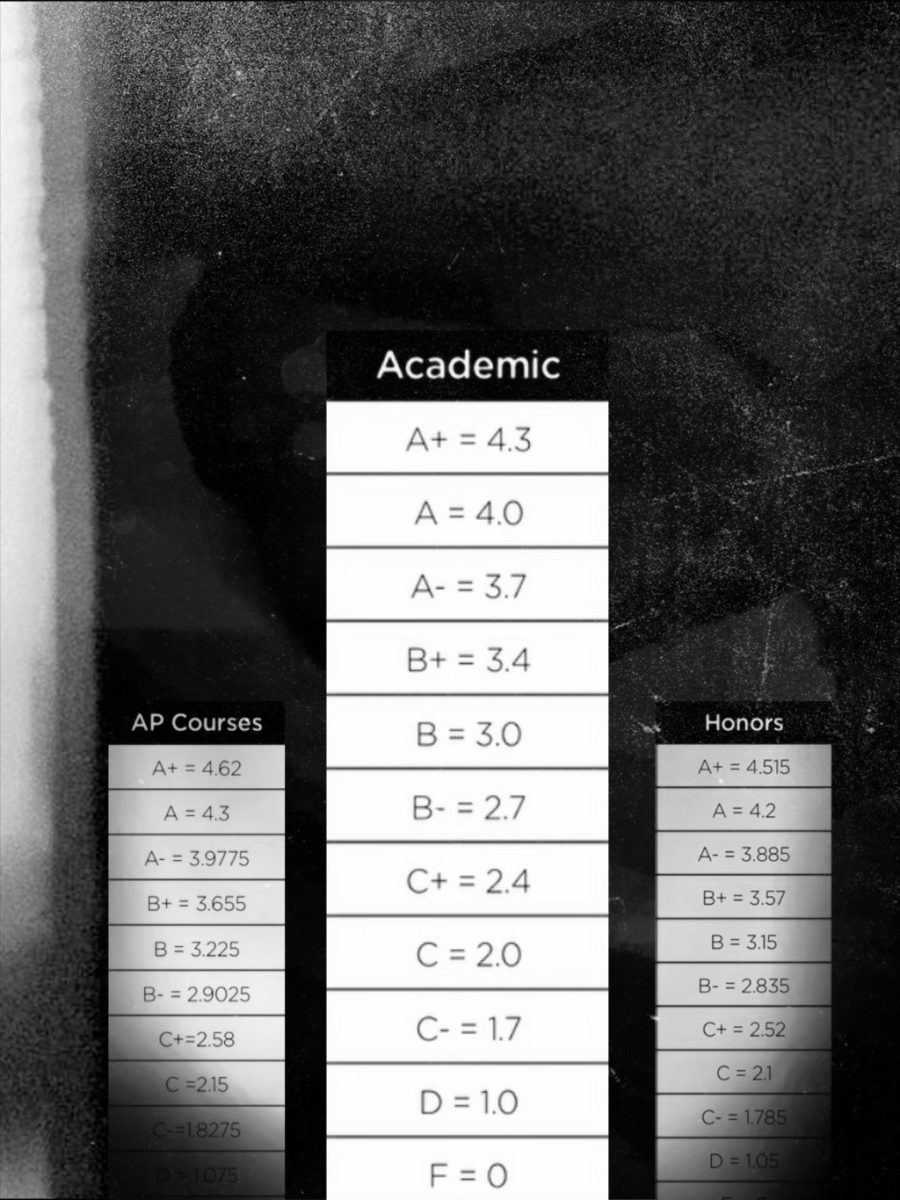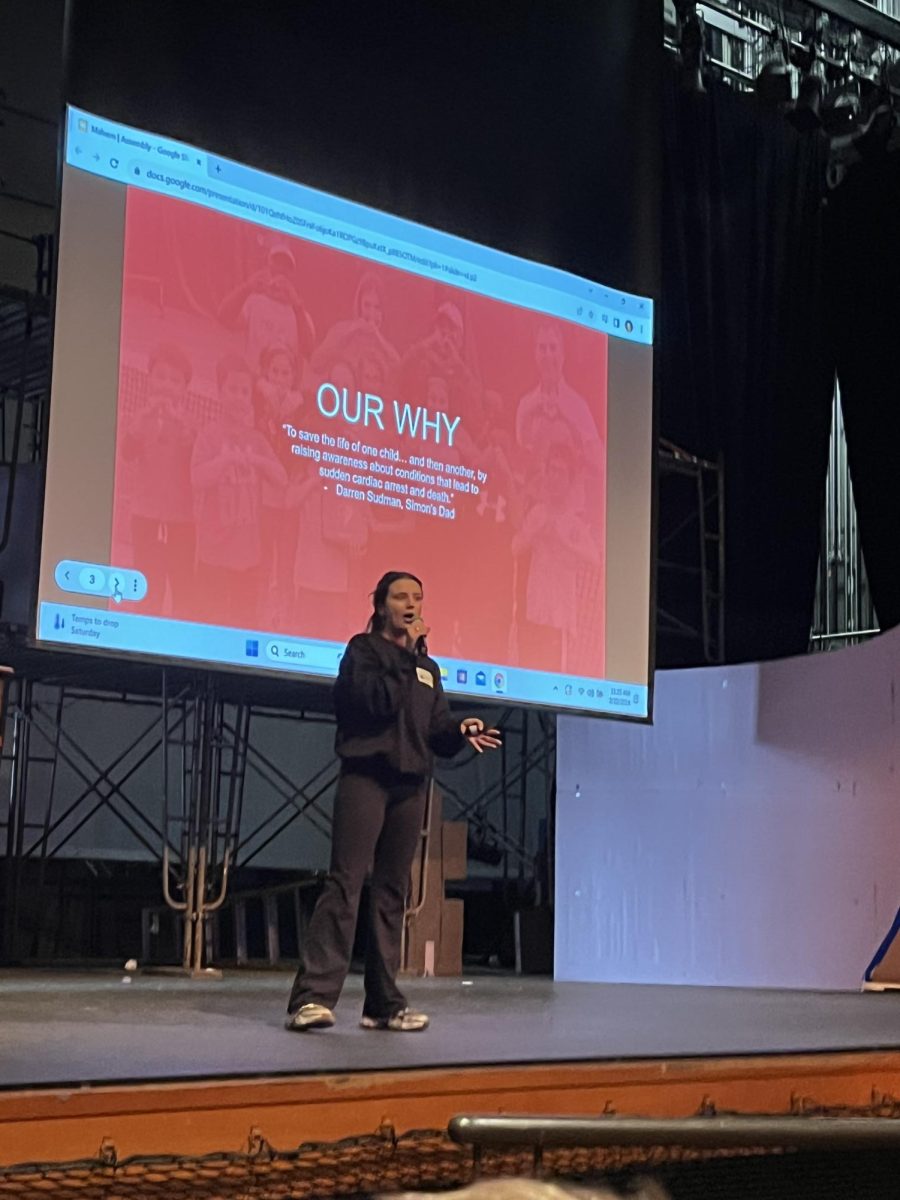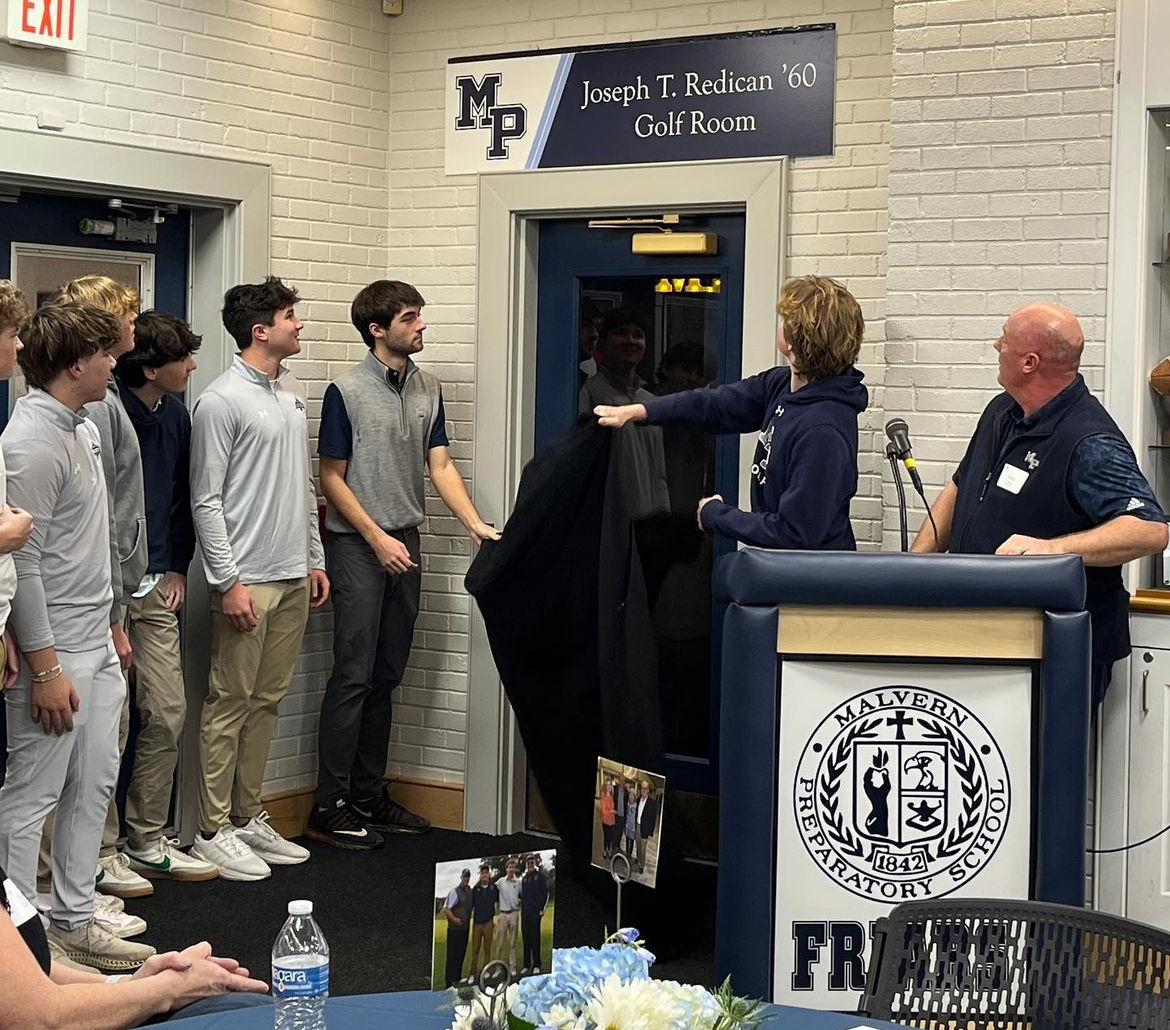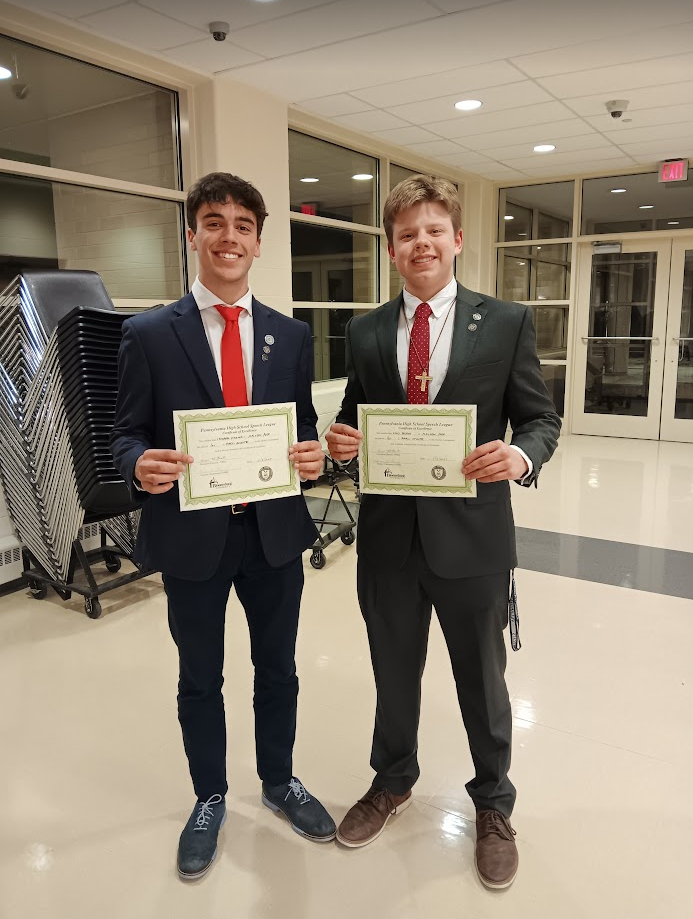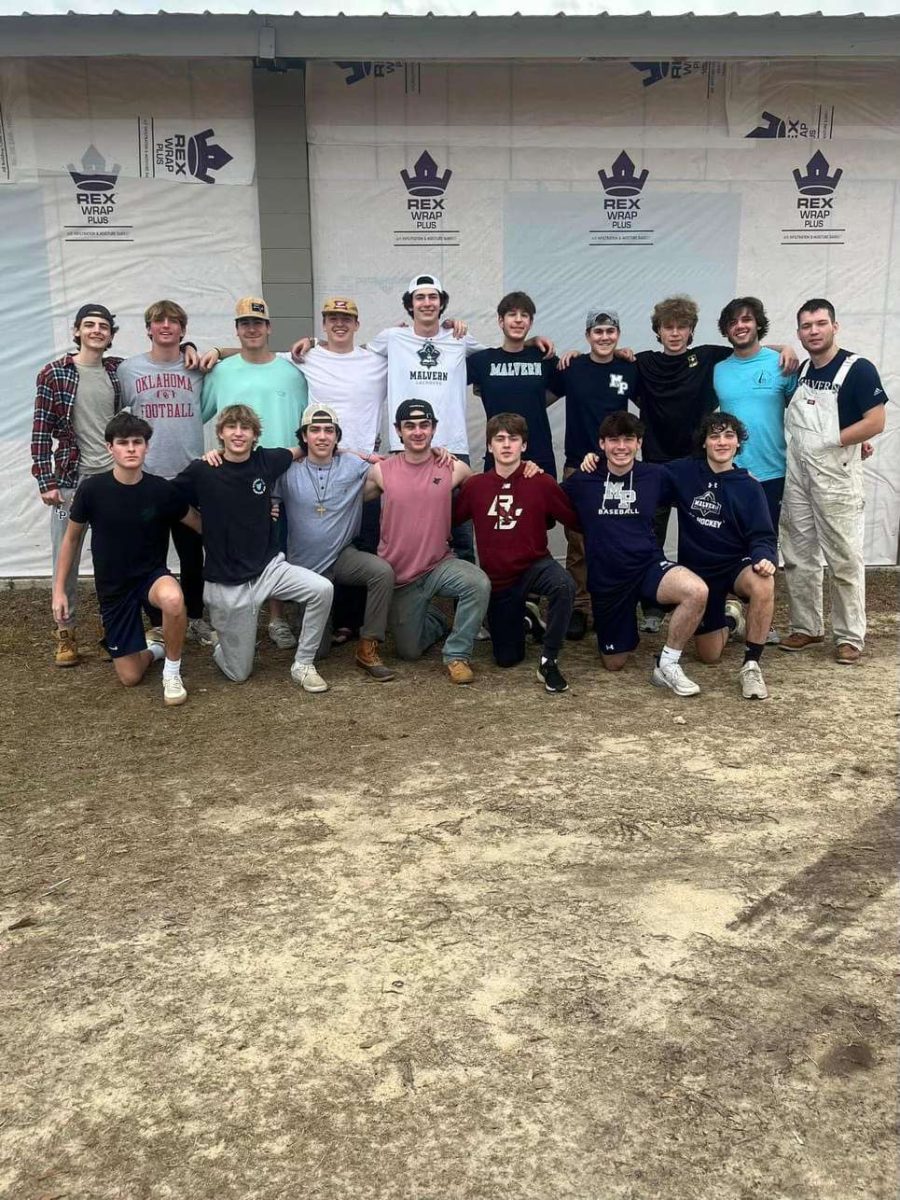One third of Malvern’s strategic vision – entrepreneurial learning – aims to make Malvern students into creative and collaborative problem solvers.

 On a walk through the counseling offices, Malvern students and faculty members can see a three part venn diagram with the words “Augustinian,” “Globally Literate,” and “Entrepreneurial” each inscribed in a circle. A line extends from red-colored center to a question that asks, “What can we design in this space?”
On a walk through the counseling offices, Malvern students and faculty members can see a three part venn diagram with the words “Augustinian,” “Globally Literate,” and “Entrepreneurial” each inscribed in a circle. A line extends from red-colored center to a question that asks, “What can we design in this space?”
The venn diagram is Malvern’s strategic vision which seeks to interpret Malvern’s mission statement and make it relevant to today, according to Head of School Mr. Christian Talbot.
In order to help cultivate Malvern students’ ability to creatively and collaboratively problem solve, Malvern has created the Honors Social Entrepreneurship class, invited speakers distinguished speakers who had entrepreneurial background, and implemented project based learning.
The Class
Social Entrepreneurship became a full time class after previously being offered only during the summer and over Christmas break. This class is student centered and solely project based learning. Despite the name, Talbot said the class is not about business.
 “The default reaction to the word entrepreneurship is that it’s about a business. That it’s about creating a business. That it’s about launching a startup. That it’s about making money.” Talbot said. “As far as I’m concerned, it doesn’t need to be about any of those things at all, ever. It might be, but it doesn’t have to be.”
“The default reaction to the word entrepreneurship is that it’s about a business. That it’s about creating a business. That it’s about launching a startup. That it’s about making money.” Talbot said. “As far as I’m concerned, it doesn’t need to be about any of those things at all, ever. It might be, but it doesn’t have to be.”
Talbot said the purpose of the class is not to develop students into businessmen, but rather to develop them into collaborative, creative problem solvers.
“If zero percent of students in Social Entrepreneurship develop an interest in business, I would have no problem with that,” Talbot said. “If 100 percent of them developed an interest in business, I would be totally fine with that too. But that is completely beside the point. There is no connection between Social Entrepreneurship, the class, and anything related to business.”
Talbot wants entrepreneurship at Malvern to focus around creative and collaborative problem solving. He believes this skill and mindset will help Malvern students innovate and solve problems in the future that have never been solved before.
Talbot thinks that the best solutions come out of teams working together, so he stresses that entrepreneurship must be collaborative.
“You look at all the great innovations, they were never created by one person,” Talbot said. “They were always created by a team. There’s a mythology around Steve Jobs, but he had an incredible team. There’s a mythology around Thomas Edison, but he always had a great team around him.”
Talbot said Social Entrepreneurship is targeted to equip students with a method for solving these problems. In order to facilitate this, students are placed in teams and allowed to pick an area where they can design a solution that will make a positive social impact.
However, not all students think the class is effective.
 “[Social Entrepreneurship] is an easy A,” senior Rudy Gabriele, who takes the class, said. “It’s a guaranteed A if you participate.”
“[Social Entrepreneurship] is an easy A,” senior Rudy Gabriele, who takes the class, said. “It’s a guaranteed A if you participate.”
Gabriele said he does not like the class and only took it because his parents wanted him to take it.
Gabriele added the class breaks up into groups during most classes to work on their projects, but students don’t do much work during this time.
“[When] we break up in our groups, we talk about social impact problems in our world and we try to make a prototype to solve them,” he said. “We work on the project, so not too much work.”
Despite this, he said the class did teach him how to solve problems.
Unlike Gabriel, senior Matt Wray enjoys the class.
“I think it’s a great class. It’s definitely a different style than your everyday math, english,” Wray said. “It’s more real world stuff and it’s going to get you ready for the next step.”
Although Wray said the class does teach students a different kind of thinking, he enjoys it especially because of his interest in business.
“[The class] gives you a taste of what I’m trying to do as a [future] business major in college,” he said. “Not a lot of high schools have that opportunity.”
 Like Wray, senior Vince Melchiorre chose to take the class because he wants to go into business.
Like Wray, senior Vince Melchiorre chose to take the class because he wants to go into business.
“It’s a really good class,” Melchiorre said. “It’s cool to get a taste of the business world before college because that’s what I want to do.”
Melchiorre said the class taught him new things.
“I’ve learned to use my brain in different ways that I didn’t understand before,” he said. “StrengthsFinder was pretty cool. I actually learned what my top five talents were and it was the kind of stuff I didn’t expect.”
Talbot said the class is different than the real world in that it is safe for students to fail. Students each get an A in the honors class, and Talbot does not want grades to motivate students.
“The grading philosophy of the class is organized around that,” Talbot said. “We wanted students to feel like they could be in this class, they could be making mistakes on a regular basis and not be penalized with the grade for making those mistakes.”
However, Talbot said he and the other teachers are still trying to figure out how to balance the safety of failure with motivating students to work hard.
“In theory the solution is a culture and a habit and a practice of tremendous feedback,” he said. “If you start with the assumption that students have picked something they’re genuinely interested in, and you allow them to explore the particular areas within that category that they’re genuinely interested in and you give them a lot of feedback— my conviction is that over time, that student will develop the authentic motivation to do their work.”
Entrepreneurship in Other Schools
Malvern is not the only school to offer an entrepreneurship program. Inside the Inter-Ac, Springside Chestnut Hill Academy also incorporated entrepreneurship into their curriculum. Their Center for Entrepreneurial Leadership (CEL) aims to teach an entrepreneurial mindset to students starting in fifth grade and culminating in high school. The CEL is a physical building with multiple studios targeted for different purposes.
No part of the CEL impacts students’ transcripts, and CEL Executive Director Mr. Edward Glassman said students sometime struggle with motivation.
Glassman said Springside Chestnut Hill started looking at what they can teach students to make them successful. “We started to form this thesis that what these people had in common was what we call the entrepreneurial mindset,” he said.
Springside Chestnut Hill’s entrepreneurial mindset includes resourcefulness, resilience, creative problem solving, and learning how to make a dent in the universe.
Glassman said Springside Chestnut Hill integrates entrepreneurial experiences into their curriculum beginning in fifth grade. This year, Springside Chestnut Hill launched a capstone project for all sophomores, during which students each launch some kind of venture.
Glassman said the capstone is during sophomore year so that students can continue with their venture if they choose.
As an additional extracurricular activity, students can choose to take part in a startup incubator sponsored by Springside Chestnut Hill. Past ventures include business models, non-profits, and app ideas. Additionally, Springside Chestnut Hill has a fund specifically for giving startup capital to students in this program.
Students work to build the plan for the venture and then present them on “Demo Day” to investors and local entrepreneurs. After Demo Day, Glassman said about one in five ventures receives funding.
Entrepreneurial Tools
At Malvern, Social Entrepreneurship uses tools like Design Thinking and Gallup StrengthsFinder to teach an entrepreneurial mindset to students and form them into collaborative, creative problem solvers.
According to Design Thinking for Educators and Talbot, Design Thinking follows a step by step process that can sometimes vary.
The basic steps include recognizing a problem, empathizing with those who face the problem, “ideating” a prototype, testing the prototype, and collecting feedback to refine the prototype.
At the beginning of the class, each student takes the Gallup StrengthsFinder test to determine his top five strengths. When put into teams, students are instructed to know their own and teammates’ strengths in order to create a more effective team dynamic.
Talbot said StrengthsFinder made a lot of sense to him and was more accurate than any other personality assessment he has ever taken. He likes how students who take it learn about what they are good at instead of what they are not good at.
 “StrengthsFinder is all about redefining what we think of as smart and talented,” Talbot said. “It’s almost kind of like [how] ‘Moneyball’ redefined the most important metrics for baseball. I think StrengthsFinder is a way of redefining what the metrics are for learning.”
“StrengthsFinder is all about redefining what we think of as smart and talented,” Talbot said. “It’s almost kind of like [how] ‘Moneyball’ redefined the most important metrics for baseball. I think StrengthsFinder is a way of redefining what the metrics are for learning.”
Talbot says the strengths act like themes. Having a strength just means that theme is something that comes naturally to whoever possesses that strength. Intentional practice is necessary to develop a theme into a strength, according to Talbot.
“Any strength taken to an extreme is going to be a weakness. Every strength means that if you have a strength [in a certain category], that strength is not [in a different category],” Talbot said. “That could be a gap or a weakness or a deficiency, but if I’m aware of that, I can work on that.”
Social Entrepreneurship class co-founder and entrepreneur Mr. Vincent Wolfington ’58 said Gallup CEO Jim Clifton first introduced him to StrengthsFinder. Clifton’s father was a social psychologist who developed the basis of the StrengthsFinder program. Clifton and Wolfington decided to bring StrengthsFinder to high schools.
“That is a fundamental principle today of good business practice,” Wolfington said. “And that is use the talents you have, leverage off them. Learn to engage and collaborate with others who have other talents, but whose talents can compliment your talents to help you be successful in what you want to today and help them be successful in what they want to do.”
Wolfington co-founded Social Entrepreneurship because he believes high school students need experiential learning and that the lessons and tools students learn in Social Entrepreneurship are very valuable.
 “The benefit of the Social Entrepreneurship program is that it’s not about you,” Wolfington said. “It’s about you in the context of the process and how well you learn to master the process. So you can manage, using what talents you’re given and talents of others, in order to make some meaningful contribution to society.”
“The benefit of the Social Entrepreneurship program is that it’s not about you,” Wolfington said. “It’s about you in the context of the process and how well you learn to master the process. So you can manage, using what talents you’re given and talents of others, in order to make some meaningful contribution to society.”
But not everyone is sold on StrengthsFinder. In a column published at Harvard Business Review, Hogan Assessments CEO Tomas Chamorro-Premuzic argues that strength based coaching, like industry leader Gallup StrengthsFinder, can actually weaken you.
Chamorro-Premuzic said strength based coaching is not backed by scientific evidence, can give a false sense of competence, can lead to resources being wasted on less talented employees, overuses some strengths, and doesn’t address the real problem workplaces face.
“We cannot solve the severe problems we face in leadership with wishful thinking. Strengths-based interventions may be useful if the goal is to help individuals ‘self-actualize’ or increase certain aspects of well-being,” Chamorro-Premuzic wrote. “However, if the focus is on making people more competent, productive, or effective, managers and decision makers should work instead on mitigating people’s weaknesses.”
Social Entrepreneurship teachers are also trying to figure out how to mitigate the class’s weaknesses.
Motivating Students without Grades
History Department Leader Mrs. Harriet Lappas co-taught Social Entrepreneurship last year, and said that motivation in class was an issue.
“[Motivation] varies from student to student like it does in the classroom,” Lappas said. “On my team of five, I would say three students were really, really motivated, one was semi-motivated, and one was along for the ride.”
In the current grading model, all of these students received A’s.
 Lappas said teachers in the class thought students would motivate each other, but that did not happen as well as they predicted. She thinks the solutions will come with more structure and accountability.
Lappas said teachers in the class thought students would motivate each other, but that did not happen as well as they predicted. She thinks the solutions will come with more structure and accountability.
School Counselor Mrs. Korin Folan currently teaches the class and also agreed that motivation was an issue. However, she said allowing students to pick their own project helps with motivation.
“I do think that now that we had our first round of presentations, I hope that that sparks more motivation in our students,” Folan said. “You could tell in the first round of presentations who was motivated [and] who wasn’t, who was excited [and] who wasn’t.”
In order to help motivate students with feedback and help them improve, the class uses the KiSH feedback system that Talbot first learned about from High Tech High. KiSH stands for kind, specific, and helpful. Talbot said High Tech High only uses project based learning, so they had to create an effective feedback system.
“When you start with something kind, you put someone emotionally and psychologically in the right space to receive feedback,” Talbot said. “That puts them in a better position to hear and therefore use the feedback they’re going to get. “
Talbot said being specific helps students avoid confusion and being helpful ensures the feedback is productive.
Despite this thought process, Talbot said he and the teachers are trying to figure out how to best deliver feedback to students and ensure that students listen to the feedback and then make changes based on that feedback.
Feedback from students and teachers alike is helping Social Entrepreneurship change.
Lappas would like to see a greater academic component to the class.
“In addition to all of these wonderful experiences off of campus, I think there has to be a little bit more of an academic piece to it,” she said. “What I would like to see is us focus on… learning about what it takes to be a good leader, and also reading case studies of businesses or entrepreneurs or innovators, visionaries— whatever we want to call them— that used Design Thinking in their everyday life.”
Like Lappas, Folan believes the class should incorporate more supplemental readings.
“We could improve sparking more curiosity and excitement in our students by sharing articles and reflecting and talking about that.”
Entrepreneurship in the Real World
One of the classes few opportunities to study real world entrepreneurs was visiting Grand Central Tech in New York City.
Grand Central Tech is a technology startup accelerator that works with entrepreneurs to get the project off the ground according to Grand Central Tech co-founder and Managing Director Matt Harrigan.
Harrigan said there has been a rise in young people creating new startups and entering the world of entrepreneurship in recent years. He thinks there are two main reasons for this.
“One is fame and glory. Listen, that’s part of what motivates people back through history. I think that there is some negative to that. I think the number of people who actually achieve fame and glory in the startup ecosystem are few and far between,” he said. “The other is self determination. That part of it I do applaud, especially in the wake of the 2008 financial crisis.”
Harrigan said Grand Central Tech guides young entrepreneurs and helps them succeed.
“Startups are able to recalibrate their priorities from fame an glory and building the next Snapchat to building practical businesses that have immediate commercial implications that the broader corporate world will be interested in participating either as a customer or an acquirer or an investor,” he said.
One cause of the recent rise in startups was the change in the consulting industries in the late 1980’s and 1990’s. Instead of focusing on innovating and creating new ideas, the consulting firms began recommending ways to cut costs and expenses. New free trade agreements helped with this process and outsourcing, according to Harrigan.
“You saw a lot of corporations basically shut down their innovation efforts. Instead of concentrating on internal [research and development] the way traditionally the major American companies did up through the sixties, they starting focusing on making their operations as lean as possible,” he said. “At the same time that you have that going on in the corporate world, you have the government world [becoming] increasingly dysfunctional. The federal government is increasingly dysfunctional we all know that.”
Harrigan said these causes made young people become disenchanted with the traditional corporate world and start to want to create their own jobs. Grand Central Tech works with these young entrepreneurs and helps build a bridge between corporations and startups.
“Grand Central Tech is built to find startups who are interested in liaising and interacting with the corporate world and likewise we find corporations who are interested in liaising and interacting with the startup world,” Harrigan said. “We have a secret sauce in terms of how we connect them.”
What Comes Next
Just like a new startup, Social Entrepreneurship is not finished in its development as a class, according to Talbot. It will continue to evolve like the rest of Malvern.
In order to help evolve Social Entrepreneurship, Malvern created a new position, Director of Social Entrepreneurship. This role is smaller than the Director of Experiential Learning and differs from it in that it will only focus on the Social Entrepreneurship class and not experiential learning as a whole, according to Talbot.
English Department Chair Mr. Jay Rogai has taken over this new position. He said he loves that the class can create a social impact and teach important lessons.
“I started doing it last year and just wanted to continue working in that capacity with students and with faculty,” Rogai said. “As far as what I’d hope to accomplish, I think just making it the best experience possible.
Rogai said he is exploring potential changes in the course including its length and potential a partnership with Malvern’s sister schools.
Talbot said the board brought him to Malvern partly to help raise the academic profile of the school. To him, that meant implementing student centered and project based learning, as well as increasing efforts that cultivate an entrepreneurial mindset in students.
Talbot said the future of learning at Malvern will include the Academy Model. This will greater incorporate project-based, problem-based, and student centered learning.
The Academy Model started with the middle school and will enter the high school with the ninth grade starting next year.
“[The Academy Model] is the redesign and the enhancement of the entire grade level,” Talbot said. “The Academy Model is very simple. It’s teachers working in teams and then designing student centered learning.”
Talbot said this will allow students to learn skills that are coordinated across all the subjects that they have.
“I think we are at the dawn, the very beginning of a long term shift of what learning looks like here at Malvern,” Talbot said. “The board wants to sustain this long after I’m gone, because that’s what the world is really calling for. It’s about being ahead of that curve so when the wave starts to crest, we’re prepared to ride that wave long and far.”



